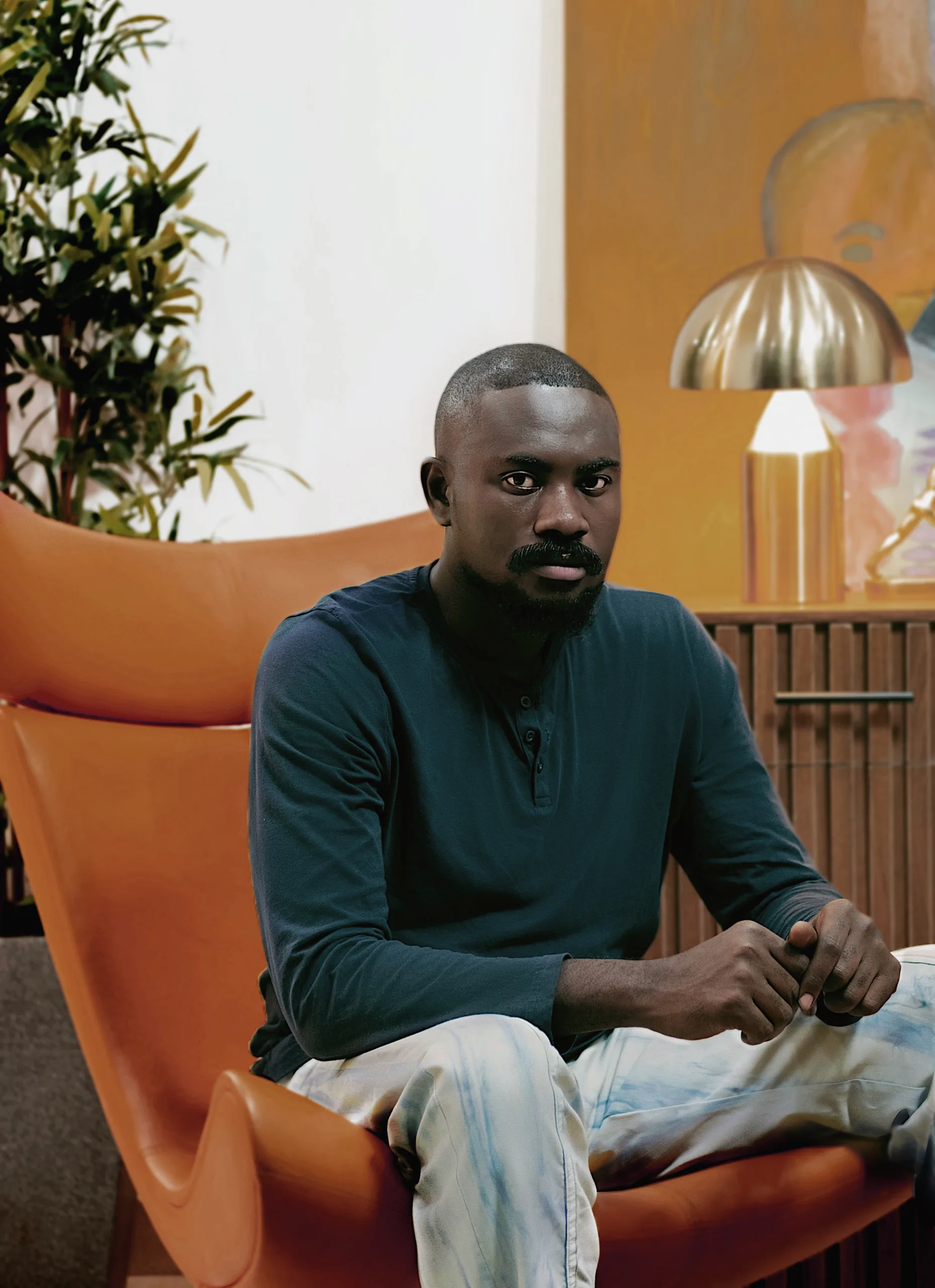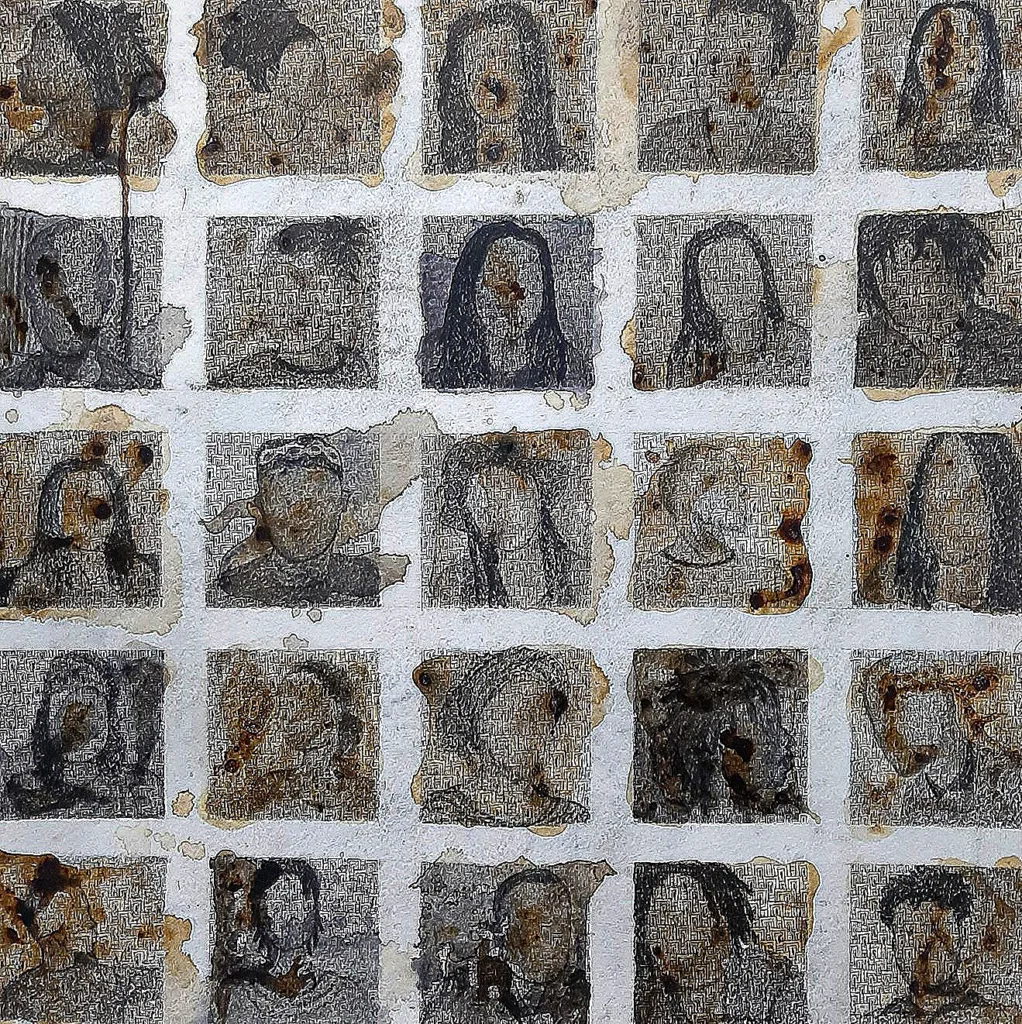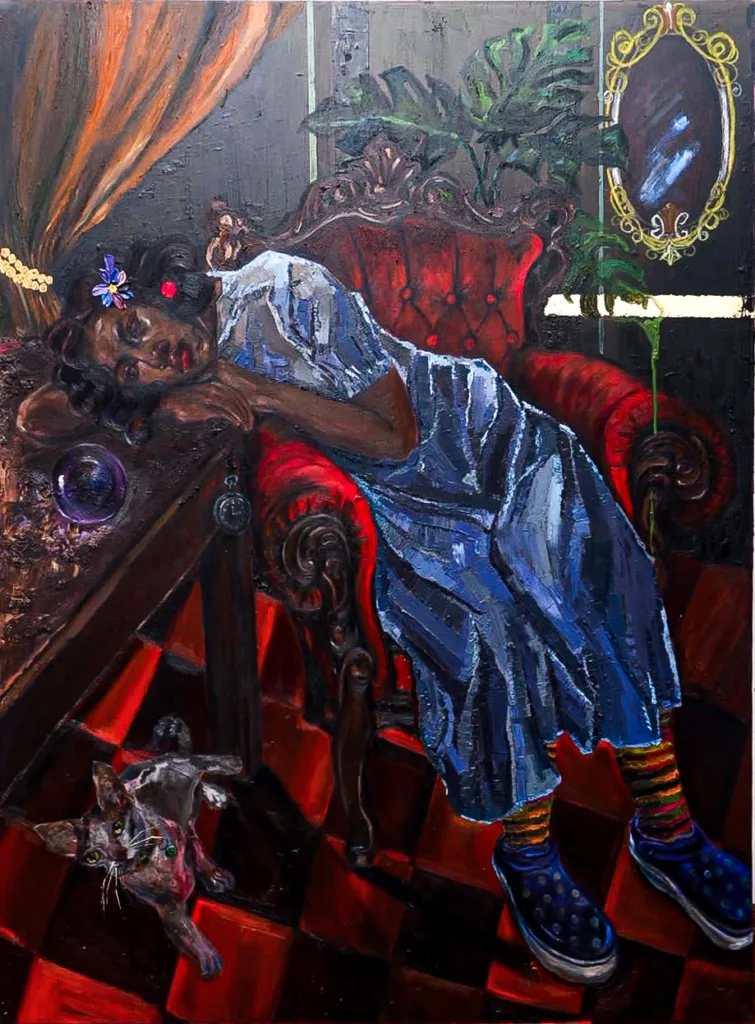This group show includes chosen paintings and mixed-media pieces by eight native Nigerian artists, curated to provide an engaging, thought-provoking look into the complexities of typology.
A.S: “Parallel Passages” is an interesting play on words. Can you elaborate on the idea and the message it plans to send across to its audience?
D.H: Parallel Passages in any literary work are the pages that mirror each other in meaning, in content and in structure, which gives insight into the author’s plot and accentuates the actual ideology to give direction to the story or theme.
The exhibition wants to explore the identification of common traits or patterns and the experiment of connecting the dots. It’s being curated to highlight the subject of comparisons between connecting stories.
About 8 Nigerian Artists are going to be telling stories using this experiment, working across mediums from painting to mixed media to sculpture and more. Some would be fictional stories while others based on true events.

Image courtesy of Kokopelli Gallery
A.S: Please tell us about the inspiration behind Kokopelli Gallery?
D.H: This is an interesting but long story in itself but I’d make it short. Firstly, like I always say, the name Kokopelli was coined from a need. At a time when I realised the dynamism of Storytelling (for all races), the different layers and the spirituality, how it helps people from every part of the world find common ground, empathy, and a sense of belonging, which are undeniably spiritual experiences, I wanted a brand name that would satisfy the need. Kokopelli is a mythical creature who is known as a Storyteller but also referred to as the god of fertility. With his flute (arguably shaped like Africa’s vuvuzela) and other symbolic associations, he contributed to the rich tapestry of oral narratives that convey cultural wisdom, values, and a deeper understanding of the interconnectedness of life.
Although first heard of among the native Americans, his true origin wasn’t really ascertained, which speaks to our intercontinental approach. Kokopelli may have originally been a representation of Aztec traders, known as pochtecas, who may have travelled to this region from northern Mesoamerica. According to studies and research conducted, the Olmecs were Africans from the Mandinka region of West Africa. They used the Mende script to write and they spoke the language. It was found to be identical to the Mende script used in West Africa. However, none of these have been firmly confirmed.
At Kokopelli, we believe everyone has a story to tell, no matter your tongue or tribe, or how simple your story is, it is compelling just enough. We want to tell the African story, but we’re also interested in stories from every part of the globe, hence the universal vantage point.

Image courtesy of Kokopelli Gallery
A.S: How did you decide on the 8 artists chosen for this exhibition?
D.H: For every Kokopelli’s project, we always look out for Artists who have mastered the Art of storytelling as is our core. We found these 8 artists who work across mediums from painting to mixed media to sculpture and could interpret the experiment.
A.S: What was your favorite part about putting together this exhibition?
D.H: It’s been on the table for a while, so my favorite part I’d say is having to bring it into reality. Also when the works the Artists produced for the show started rolling in, it was very gratifying.
A.S: How do you find that these stories told and conveyed by them can be relatable to them in the current climate in Nigeria?
D.H: I think in so many ways but off the top of my head, using typology to present nuanced political explication. There are works that are archetypal figures that speak to different facets of the political landscape in Nigeria, exploring discourse on civic engagement, governance, activism and many more.
You’d realize how many issues Fela sang about that are as relevant today as they were long years ago. There are just so many dots to connect. Many stories repeating themselves.

Image courtesy of Kokopelli Gallery
A.S: As a curator, how did the research of typology prior, influence the choosing of the artwork?
D.H: Based on our research, typology has different manifestations. We simply identified key themes related to typologies in the Artworks presented.
For example, in Ronke Komos’ works, she tells stories of how she had gotten home one day and found that her room was flooded and a number of her “album’s” photographs had been washed and she had to replicate them as paintings to the exact extent of the damage. She was simply telling a parallel story of pertinacity and loyalty.
Let’s talk about the Middle Ages and the Renaissance in Christian art, artists often used typology to connect events and figures from the Old and New Testaments of the Bible. The Old Testament casts “shadows” that recurred and were concluded in the New Testament. Like the Rock Moses struck, being Christ who was to come. The bronze serpent on Moses’ rod to be looked upon for salvation depicting the death on the cross etc. Artists painted scenes that drew parallels between figures and events in the Bible, using symbolism to depict deeper spiritual meanings.
In the Neoclassical period, the use of types and shadows in art might reflect a fascination with the interplay of light and dark as metaphorical representations of life and death, reason and delusion of some sort or even fantasies.
We considered artworks that not only depict shadows but also explore the symbolic aspects of shadows in relation to the exhibition and our everyday life generally.

Image courtesy of Kokopelli Gallery
A.S: You are both artist and curator, how do you see the cultural impact of this exhibition?
D.H: I think the timing is good, as this is the time we have people flock to the city from all walks of life, a well-curated exhibition can become a cultural attraction, drawing tourists interested in exploring Nigeria’s vibrant art scene. This contributes to the development of cultural tourism
I’d also say it’s a very broad topic, that can strike deep conversations and comments on cultural shifts, societal structures, and identity.
Lastly, any exhibition, if documented and curated thoughtfully, can leave a lasting impact on a country’s cultural legacy. This show can be instrumental to the ongoing narrative of Nigeria’s artistic and cultural development.
A.S: How does a showcase inspired by either fiction or true events hold equal amounts of symbolism?
D.H: Both fiction and true events lend themselves to visual storytelling. The symbolism can be expressed through the visual elements of the exhibition embedded in the narrative approach.
Symbolism is always subjected to exposition, helping the visitors to derive personal meaning from the body of work. Whether the inspiration is fictional or based on true events, the symbolism’s impact can be shaped by individual inclination and background.
Lastly, whether inspired by fiction or true events, an exhibition can effectively utilize symbolism to evoke emotions, and engage audiences in a thoughtful exploration of themes and ideas. The most important thing is the intentional use of symbols and the relatability within the context and the narrative.


